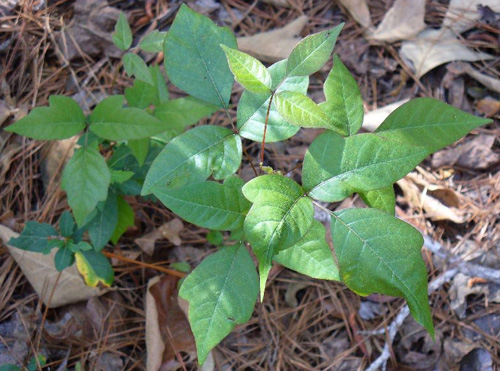Five Myths About Poison Ivy
Learn how to avoid the burning rash of poison ivy and discover the truth of five commonly believed myths about this vine.
Poison ivy spreads by seed and isn't picky about growing sites. Learn how to keep poison ivy weeds out of your garden and landscape.
As much as 85 percent of people develop skin rashes when they come into contact with urushiol, the potent oil in the sap of poison ivy. Urushiol is in the plant’s leaves, stems and roots; it’s active year round, and it’s active even up to five years after the poison ivy plant is dead. That means it’s possible to get a rash by pulling leafless vines in winter, by attempting to remove dead vines from trees and even by handling just the roots.
Poison ivy (Toxicodendron radicans) spreads by seed and isn’t picky about growing sites. You might encounter it anywhere from shady woods to a roadside ditch. It is an American native, especially common in the East, Midwest and in most of Canada. Poison ivy plants increase in girth and size year by year by underground stems. If a tree or object is nearby, the stems put out small rootlets that help it climb. Otherwise, the plant grows as a shrub or as a vining ground cover, rooting as it goes.
Identify poison ivy by its distinctive foliage. Each leaf is made up of three leaflets, the middle one slightly larger. The leaf edges may be lightly jagged or toothed. Early spring leaves are reddish, turn to shiny green in summer, and become bright red, orange and yellow in fall. Small, waxy white berries form in late summer and also turn red in fall.

Poison ivy © USDA-NRCS PLANTS Database
Repeated cutting and digging will eventually sap growth energy and kill plants. Plants also can be pulled, but be sure to wear gloves, protective clothing and eyewear. Afterward, wash all gloves and garments in very hot water separately from a general laundry load to remove the rash-causing oil from the fabric. Clean all gardening tools used thoroughly.
Another option is to spray the plant with a broadleaf or non-selective weed killer. Repeated applications are often needed. Be careful not to let spray drift on trees or nearby plants you don’t want to kill. Do NOT attempt to weed-whack poison ivy or you’ll spew the allergenic oil everywhere. Also, don’t burn poison ivy – urushiol-laced smoke can cause serious irritation to lung linings. Be aware that firewood sometimes carries poison ivy roots on the bark.
Preen Landscape Weed Control Fabric will prevent poison ivy from growing in gardens, and Preen Lawn Weed Control will kill poison ivy in the yard. Always read and follow the label directions.